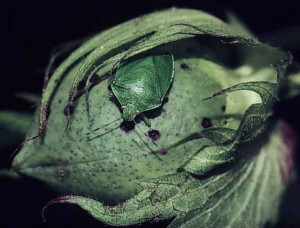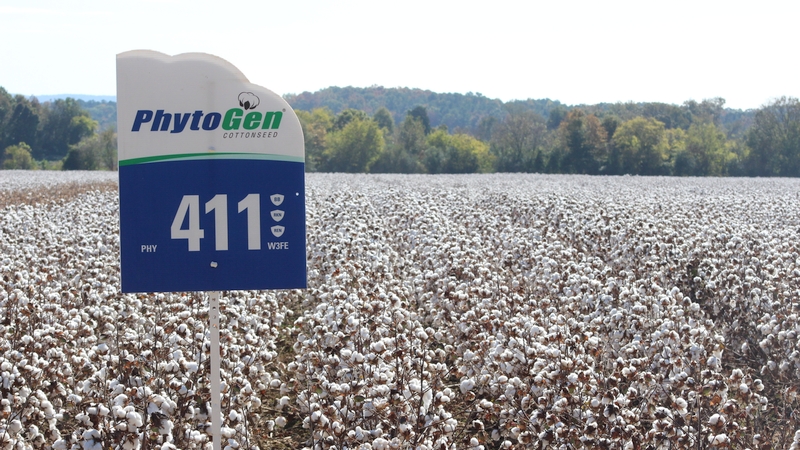Insect Sprays Declining

Since the advent of Bt cotton and after boll weevil eradication, Georgia growers have gone from almost seven annual insect sprays in 1995, to less than three in 2011.
“That’s about a 50% reduction in insecticide applications,” says University of Georgia Extension entomologist Phillip Roberts. “Granted there is a lot of variability in the number of applications made in different areas across the county. But the success of the boll weevil eradication program, the commercialization of Bt cotton – Bollgard being the first introduced in 1996 – is very apparent. But just because there is reduction in sprays for insect control does not necessarily make insect-pest management easier.
“The one thing that did change after the introduction of Bt cotton was our primary targets – we shifted from heliothines to true bugs such as stinkbugs and plant bugs.”
In other words, the primary pests – tobacco budworms and bollworms – became secondary pests. The budworm was almost uncontrollable before Bollgard hit the market and some growers were spaying once a week and still had budworm problems. Plus, using harsher insecticides for budworm control took its toll on beneficial insects. Then came Bollgard – the salvation in budworm control. And Bollworms can be controlled by a reasonably low-priced pyrethroid application.
In 1972, the average yield in Georgia was 395 pounds an acre, but the state has come a long way since then because better pest management helps bring out the best in a varitest’s yield potential.
Later on, growers were already treating for boll weevils, and the decision on insecticide sprays came down to whether or not to add additional insecticides for other pests. Sometimes an insecticide application does take out the target pest and some others, but the spray could flare other insects.
“Decisions made in terms of thrips management could influence pest management in early-mid season, and even late season,” Phillips says. “For example, foliar sprays for thrips could flare aphids. Treating for aphids could select for resistant plant bugs. Increased sprays for plant bugs could flare mites, and the tread mill continues.”
Integrated Pest Management
Roberts says the Integrated Pest Management (IPM) used today is informed pest management, not just checking cotton and spraying when economic thresholds dictates.
“There is a payoff for knowledge of the system and available control tactics.” he adds. “But a grower must have knowledge of the system, knowledge of the crop and knowledge of the pests present – whether it be an insect, a weed, or disease, or a nematode,” Roberts adds. “There must also be Knowledge of the insecticides, traits, and the effects of cultural practices, such as planting dates and tillage. And the knowledge of how all of this allows you to make better pest-management decisions.”
It’s essential that a grower understands the complexities of the IPM system and knowing what’s available in terms of management or control tactics.
Certainly, Bollgard cotton was revolutionary and game-changing technology. And it’s a fact that as growers accepted Bollgard, there was a reduction in the number of insecticide sprays applied annually.
In 2003, a trial was conducted in Georgia comparing Bollgard II and Bollgard.
“Bollgard II is a superior technology for control of caterpillar pests. We observed excellent control of tobacco budworms and corn earworms and had to make no sprays for caterpillar pests,” Roberts says.
“But stinkbugs exploited this unsprayed environment and yields were poor in this trial.
Today stinkbugs are a primary pest in most of the Southeast,” he adds.
Loss of Temik: Where to Now?
The shortage of Temik aldicarb insecticide/nematicide will cause growers to scramble for a replacement product.
“I anticipate that in 2012 the loss of Temik will have a significant impact on thrips management programs, especially in the Southeast where Temik has remained the standard at-planting insecticide,” Roberts says. “Many growers will be using alternative treatments, such as neonicotinoid seed treatments.
According to Roberts, many technologies – both foliar sprays and Bt traits – are utilized in multiple-cropping systems. Many pests, such as corn earworm and stink bugs, use these same crops during the year. Expansion of uses in multiple cropping systems may change population dynamics for some insects, which may be a positive.
“However, expansion of uses in cropping systems necessitates more careful consideration in planning for resistance management,” Roberts explains. “IPM is a proven program. IPM can reduce the need for insecticides, thus reducing selection pressure for resistant pests. Applications of insecticides are a vital component of IPM programs. When managing a complex of insects, the potential of flaring non-target pests, suppression of economic insects present, and resistance management must all be considered when selecting control technologies.
“We have a good arsenal of insect-control tools. We do have needs, especially for control of true bugs he continues. “We’re looking forward to the registration of new active ingredients, such as sulfoxaflor (Transform), which has activity on our sucking-bug complex. But we must do all we can to preserve current tools. Resistance management must be a priority.”








